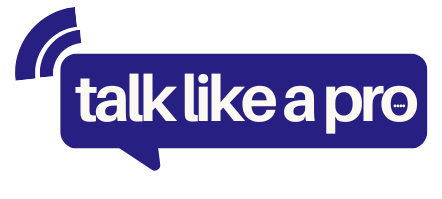Have you ever been in a situation where someone tells you “it’s up to you” to make a decision or take action? It can feel like a cop-out, leaving you stranded without input when you could really use some advice or recommendations.
But “it’s up to you” doesn’t have to be the end of the conversation. With the right response, you can take control and get the insight you need to make the best choice. This article will explore different responses, reactions, and replies when someone defers a decision or task back onto your shoulders.
What is the Best Way to Respond When Someone Says “It’s Up to You”?
The best initial response is to first acknowledge what they said with something like “Okay, I understand this is my decision to make.” Then clearly communicate what kind of input would actually help inform your decision by asking “Could you share your perspective on my options here?” or “I’d really appreciate any recommendations you might have.”
If they are still resistant, get specific by giving two clear potential choices and asking “Would you lean one way or the other between option A or option B?” Even just hearing why they can’t make a definitive recommendation can help provide useful context.
Best Responses and Reactions to “It’s Up to You”
“I Welcome Any Degree of Insight You’re Comfortable Sharing”
This response validates their position while still inviting input. Alternatives:
- “Even just talking through considerations could assist me”
- “Hearing different perspectives is valuable for informed decisions”
- “I’m open to any insights at all on factors I should weigh”
“Could You Speak to Any Limitations That Make Advice Feel Unwise?”
Exploring their hesitance reveals context to better inform your process. Some phrasing options:
- “I want to learn from your judgement on the complexity here”
- “If not a recommendation, perhaps just walking through pros and cons?”
- “Any guidance you’d be willing to unpack about pitfalls to consider?”
“Might You Have Any Leanings Between A or B?”
If still resistant, provide binary options and check if they have any leanings. Examples:
- “If I narrowed it down to option X or Y, any instincts there?”
- “Between choice 1 and choice 2, if you had to pick?”
- “If I ultimately had to decide between A and B, initial reactions?”
“Are There Particular Aspects I Should Be More Attuned To?”
Seeking key considerations overlooked can yield helpful reflective guidance:
- “What am I potentially not seeing about drawbacks or risks?”
- “Any specific pitfalls or angles I should scrutinize more deeply?”
- “What tends to get missed when assessing options like these?”
“Would Any Past Experiences Relevant At All to Share?”
You can gently prompt them to pull from their own history:
- “Have you encountered situations like this before that could offer perspective?”
- “If this reminds you of choices you’ve weighed in the past I’d be curious to hear”
- “Does this decision align with or differ from any you’ve tackled previously?”
“Even Your Raw Internal Debate Could Help My Thought Process”
Make space for them to vocalize their own inner back-and-forth:
- “If you just talked through your knee jerk reactions that could assist me”
- “Hearing how you’d wrestle with this personally may shed light”
- “However you’d inwardly work through options – that thought flow could help prime my discernment”
“Any Rules of Thumb You Tend to Lean On That Might Apply?”
Drawing out general principles or guidelines could provide applicable decision making guardrails:
- “How might the approaches you take in ambiguous situations relate here?”
- “When lacking clarity, are there certain mindsets you adopt I could mirror?”
- “In scenarios requiring discernment solo, what mental models do you leverage?”
“If I Explain My Thought Process Thus Far, Feedback?”
Have them critique your logic rather than give explicit direction:
- “If I talk through how I’m assessing pros and cons so far, would you reflect that back with reactions?”
- “I’d love objective input on the factors I’m prioritizing and gaps in my considerations”
- “Any constructive critique if I unpack my current decision making mindset and assumptions?”
“What Additional Data Points Might I Be Overlooking Here?”
Prompt additional dimensions they would explore before deciding:
- “How would you go about gathering further inputs that could shed light?”
- “What other perspectives or vantage points might provide clarity?”
- “Are there key stakeholders or trusted advisors you’d consult before making the call?”
How to Tactfully Respond to a Girl When She Says “It’s Up to You”
When a girl gives you an “it’s up to you” response, her motivations may differ from a guy’s. Female communication patterns often imply more meaning beneath the surface. Here is how to interpret and react when a girl deflects a decision back onto you:
First, recognize that an “it’s up to you” from a girl likely means…”I have thoughts on this but I don’t want to be bossy or impose”. Reassure her that you welcome and value any input or advice she may have:
- “I’m genuinely interested in your perspective and anything you think is best here…”
- “I would love if you felt comfortable offering suggestions or recommendations…”
- “Any insight you might have would be super helpful for me…”
If she remains hesitant, provide permission for her to be more directive while also giving her an “out” if she prefers not to impose guidance:
- “Truly feel free to offer an actual recommendation if you have one, no pressure of course…”
- “Don’t hold back if you have a definite preference – I welcome you steering me in a direction…”
- “Or if you’d rather not give explicit advice, even just general thoughts…”
If a girl says “Well…I sort of think Option X seems best but you should just decide!” acknowledge her preference delicately while checking if she has additional guidance:
- “Okay I appreciate you sharing that initial thought on Option X…”
- “That definitely helps steer my thinking…”
- “Did any particular pros or cons of X versus the alternatives come to mind for you?
Finally, if she stands firm on leaving the final decision to you after expressing her view, confirm that her input carries weight in your selection process:
- “Now that I know your inclination towards X, that gives me helpful context…”
- “I really value and respect your perspective on this…”
- “Your thoughts will absolutely influence my decision…”
How to Tactfully Respond to a Guy When He Says “It’s Up to You”
When a guy gives an “it’s up to you” response, he likely intends it at face value without implicit meaning. Still, there are ways to tactfully react that can gain you the input to make the best choice:
First, consider if a logical reason exists why he may be refraining from guidance – dont take it personally. Some examples:
- Maybe he truly lacks sufficient expertise on the options at hand…
- Perhaps he has provided counsel previously that was disregarded…
- He could feel it’s not his place to steer decisions needing independence…
Address the situation positively starting with an understanding of his position:
- “I understand if you feel this is best left to me to decide…”
- “If you don’t have a solid basis for recommendation that makes complete sense…”
Then emphasize your desire & readiness for any knowledge he can impart:
- “But as I’m weighing my options, any firsthand perspective would be valued…”
- “Even just talking through considerations could really assist my thought process…”
- “If there are key aspects I may be overlooking, please feel free to bring those up!”
If applicable, you can gently appeal to the relationship while being careful not to pressure:
- “Input from someone I respect certainly helps guide me towards prudent decisions…”
- “I always appreciate when you share your knowledge – it adds an helpful lens…”
- “If you ever feel something seems best let me know, no pressure of course though!”
Finally, remain solution focused by listing specifics and keeping the conversation productive:
- “If we narrow it down to Option A vs. Option B, do either of those jump out as preferable?”
- “Between Choice 1 or Choice 2, would you have an initial inclination?”
Key Takeaways: Responding When Someone Says “It’s Up to You”
Provide Affirmation
First validation sets the right tone and gets conversation flowing in a solution-focused direction.
Appeal for Their Perspective
Stress you welcome any degree of input they feel comfortable offering.
Redirect Towards Specific Options
If still resistant, list binary choices and ask their thoughts on those distinct possibilities.
In Summary: Constructively Moving the Dialogue Forward
Being told “it’s up to you” can be frustrating when starving for some wisdom. But there are productive ways forward with the conversation while respecting the other party’s reluctance to dictate directives.
Tactfully responding with affirmation, appeal, and redirection ultimately serves your need for input while upholding their position. Meeting in the middle with collaborative discourse – rather than resignation – better enables making the right decision.
While the determination does sit with you, that doesn’t preclude soliciting insights through understanding and specificity. Their experience still offers valuable contrast even if guidance isn’t handed to you verbatim.



